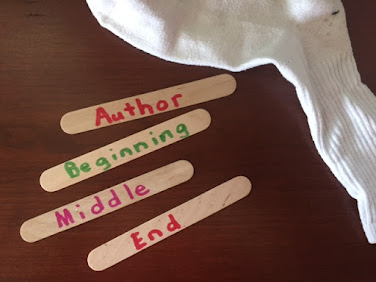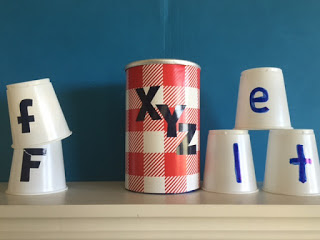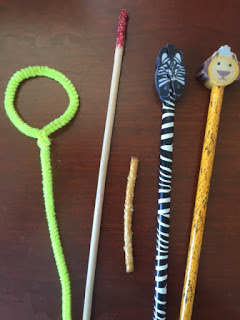Handshakes are a “hands” on way to connect with the children physically and emotionally as you start your day.
Handshake Greeting
Have each child stand as you extend your right hand to them. Say, “Good morning child’s name.” Teach the children to look you in the eyes as they shake your hand and say, “Good morning teacher’s name.”

Note! It would be good to have a discussion about this and ask them if they’ve ever seen adults shake hands. Why do we shake hands? Which hand should you use? Put a sticker or stamp on their right hand or tie a ribbon around their right wrist to help them remember. Explain that it’s important to give a firm handshake, smile, and look the other person in the eyes.
Shake a Hand (Tune: “Mulberry Bush”)
Everybody shake a hand, shake a hand, shake a hand.
Everybody shake a hand and walk around the room.
(Walk around the room as you shake hands.)
Everybody give high 5… (High five.)
Hug a hand… (Palms together, wrap thumbs around, and squeeze.)
Knuckle bump… (Make fists and bump knuckles.)
Boogey down… (Wiggle down and up with a friend.)
Smile and wink and walk back to your seat. (Smile and wink.)
Happy Handshakes
Here are some other handshakes your class might enjoy. Choose one and do it every day for a week. After you’ve introduced several you can let a special helper choose the handshake for the day.

Butterfly – Hook right thumbs together. Extend the other four fingers to make the butterfly’s wings. Pretend to flutter the butterfly’s wings as you move your hands in a circular motion.
Squirrel – One friend extends her arm. The other friend quickly runs fingers from the wrist up to the shoulder. Switch places.
Thumb Kiss – Hold up thumbs and touch as you make a smacking sound.
Hamburger – Children bump fists and say, “Burger.” Open fists and wiggle fingers together as they say, “Fries.” Hands in the air and shake fists and hips as they say, “Shake.”
Farmer – The teacher crosses her fingers and points thumbs down to represent the cow’s utter. The child grabs the thumbs and pretends to milk the cow.
Cool Dude – Partners knuckle bump and then open their fist and slide it back as they say, “Pssshhh!”
Double Cross Handshake – Shake right hands and then reach across and shake left hands.
Lumberjack – Partners hold up right thumbs and grab them with the left hand. Partners then clasp right fingers and pretend to saw back and forth.
Builder – Shake hands and move them up and down vertically as you say, “Here’s a hammer.” Move hands horizontally back and forth as you say, “Here’s a saw.” Gently twist wrists as you say, “And here’s a screwdriver.”
Potato – Bump fists as you say, “Baked potato.” Bend index fingers and touch as you say, “Tader tot.” Open fingers and wiggle with your partner as you say, “And fries.”
Ghost – Extend arms and swish back in forth as you say, “Woooo!”
Buzz! Extend index finger and touch to your partner’s index finger as you make a buzzing sound.
Fisherman – Place right hand on each other’s right forearm and tap gently like a fish tail. Bend right arm back as if reeling in a fish as you say, “Good morning!”
Hand Hug – Hold up right palms and touch in the air. Bend thumbs around and gently squeeze.
Spiderman – Partners hold up four fingers and intertwine. Spiders have 8 legs and you have 8 wiggly fingers.
Biker – Children hold out fists and stick up thumbs. The teacher grabs the thumbs and pretends to turn them while making a “Brrrrmmmm” sound. “Now your brain is revved up and you’re ready to learn!”
Body Parts – Call out different body parts and challenge children to greet partners by gently touching elbows, knees, heads, ankles, toes, chins, etc.
Jellyfish – Bump fists and then open and close fingers as you pull them back like a jellyfish.
Bow Wow – Partners bow and then make “w’s” by sticking up three middle fingers. Open mouth and place “w’s” on either side to create the word “WOW!”
4-H Hello – Children can choose one of these “H’s.”
High Five (High five partner.)
Handshake (Shake hands.)
Hug (Hug each other.)
Hollywood kiss (Air kiss on left and right.)
*They can also choose a homerun, which is all four!
Hint! Cut a hand, numeral “5”, heart, and lips out of fun foam or felt. Place on the floor so the children can stand on the one they’d like.

P.S. Think about saying good-bye to your students at the end of the day with a handshake.






















































